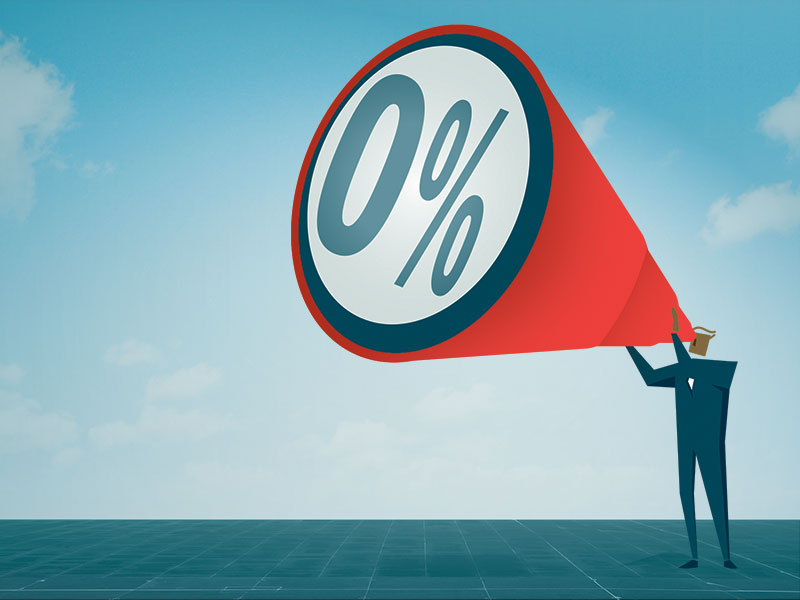
With ETF growth and downward pressure on mutual fund fees, choosing funds can be a heady exercise for a cost-conscious investor. Selecting a fund with a management fee on the far side of 0.50% might be the investment equivalent of settling for a ho-hum romantic partner: Why settle when you can find funds for free?
Last year, Boston-based FMR LLC (a.k.a. Fidelity Investments) introduced two no-fee index mutual funds in the U.S., and in Canada, Toronto- based Horizons ETFs Management (Canada) Inc. offered two zero-fee ETFs. Such headline-grabbing funds demonstrate how fierce competition is among asset managers, especially in the U.S. A report by Chicago-based Morningstar Inc., released in April 2019, said U.S. investors paid less in 2018 to own funds than ever before, with the asset-weighted average expense ratio of U.S. mutual funds and ETFs hitting 0.48%, down from 0.93% in 2000. In Canada, mutual fund fees fell 13.3% between 2007 and 2017, according to the Investment Funds Institute of Canada (IFIC).
Tom Bradley, president and co-founder at Steadyhand Investment Funds in Vancouver, says mutual fund price decreases often apply to smaller or underperforming funds within a fund family. He says many funds have stable fees, or relatively high ones, such as liquid alternatives with performance fees.
Jason MacKay, head of wealth-management intermediaries for Invesco Canada Ltd. in Toronto, puts downward price pressure in context, saying lower mutual fund fees are part of the larger trend whereby tech has impacted most industries’ cost structures. Further, ultra-low-fee funds tend to be bulk beta, he says, or they make revenue in other ways, such as through securities lending.
Still, the heightened focus on fees is largely welcome and expected, with the mutual fund’s antiquated legacy of embedded compensation and multiple series. “Transparency matters above all else,” so that investors and financial advisors can make informed portfolio decisions, MacKay says, but he warns that transparency should extend to all products. When total costs are calculated, the price difference between a Series F mutual fund and an equivalent ETF isn’t large, he says.
Bradley notes that, unlike management fees, dealer costs for advice and distribution haven’t experienced downward price pressure. In step with initiatives such as the second phase of the client relationship model (CRM2), he’d like to see continued improvement in investor understanding of product costs vs dealer costs, he says, adding that his firm gains a “gradually stronger flow” of new clients displeased with fees at their previous brokerages.
As transparency improves – for example, as fund families streamline their shelves and firms unbundle fees – a baseline cost for active management will emerge, MacKay says. But that cost won’t be zero, he says, because active management is worth more than buying the market.
In fact, he expects active managers will evolve to differ markedly from their benchmarks through specialized, value-added capabilities. “If you’re truly adding alpha in a world where that’s becoming more rare, you will have the opportunity to price accordingly,” MacKay says.
If two proposed class-action lawsuits are any indication, clients are loath to pay extra for supposed active managers who hug the index. In April 2019, class actions were filed in B.C.’s Supreme Court against RBC Global Asset Management Inc. in Toronto and its Montreal-based subsidiary, the Royal Trust Co., and Toronto-based TD Asset Management Inc. over excess fees paid for alleged “closet indexing.” At the time Investment Executive went to press, the class actions had not been certified.
Cerulli Associates, based in Boston, forecasts from its U.K. research that, rather than move toward zero-fee funds, managers will increasingly innovate, potentially with performance fees.
Along with performance, Doug Coulter, president of RBC Global Asset Management, cites volatility as typically missing from the fee conversation. While low fees contribute to returns, price is “only one of many factors,” he says. Building wealth with acceptable risk is key, Coulter says.
Getting investors to embrace that fuller viewpoint might be difficult when regulators focus on cost as a factor in positive investor outcomes, as in the Canadian Securities Administrators’ proposal to ban embedded commissions.
Bradley says low-cost passive investing isn’t a panacea, estimating that such portfolios work successfully for less than 10% of investors because they don’t address investors’ various financial and behavioural challenges.
His firm, which sells directly to clients, offers fee discounts based on client tenure and asset thresholds. “We think the right way to lower fees is having long-standing clients,” Bradley says. A 2017 report from New York-based Strategic Insight Inc. noted that many dealers lower fund fees as unitholder assets rise, and/or offer preferred pricing and other discounts.
Like ultra-low fees, such innovation is starting to grab headlines as more firms customize client services with pricing programs or other fee reductions. The 2017 Strategic Insight report forecasted that fund fees will increasingly diverge due to the ability to adjust fees based on assets, along with the unbundling of advisors’ fees.
At the same time, customization could also present challenges, as it makes tracking a fund’s total cost increasingly complex, the report says. (Strategic Insight calculates total cost using a framework that includes fund costs from acquisition through redemption.)
Regardless of where fees land, it seems investors and mutual funds will continue their love affair. IFIC’s 2018 investor survey found that 89% of investors are confident mutual funds will meet their financial goals – an all-time high after 13 years of tracking.